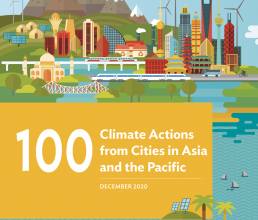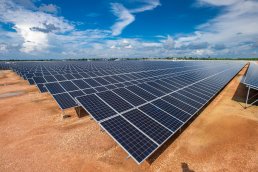First appeared in

Asian Development Bank
100 Climate Actions from Cities in Asia and the Pacific
Uzbekistan is rich in sunshine hours, yet 90% of its electricity is sourced from fossil fuels. The country’s first solar park will initiate a transition to renewables for electricity needs and push this number down.
Uzbekistan is rich in sunshine hours, yet 90% of its electricity is sourced from fossil fuels. The country’s first solar park will initiate a transition to renewables for electricity needs and push this number down.
A new photovoltaic solar park will be established in Navoi, a region in the North of Uzbekistan mostly covered by the Kyzylkum desert. The region will host what is hoped to be the first of multiple large-scale solar parks, with a starting capacity of 100 megawatts and an estimated production output of 255 million kilowatt hours (kWh) per year, enough to power 150,000 homes. It will also save an estimated 140,000 tons of CO2 every year through displacement of fossil fuel generation.
140K
TONS OF CO2 REDUCED ANNUALLY
TONS OF CO2 REDUCED ANNUALLY
The power plant will start supplying the grid in the first quarter of 2022 and will reshuffle Uzbekistan’s energy portfolio and grow the share of renewables beyond the current 10% that is held by hydropower. With a goal to bring renewables’ share to 25% by 2030 on the national agenda, 9% is planned to be held by solar power, with the remaining 11% and 5% to be held by hydropower and wind power respectively.
The project received a $13 million loan from the ADB and an $8 million loan from the Canadian Climate Fund.

Uzbekistan is aiming to have 25% renewable energy by 2030 (photo by ADB).
The Challenge
Largely covered by the Kyzylkum desert, Navoi’s potential as a viable
site for large-scale solar parks development has not been tapped fully.
Co-Benefits
Economic By contributing to energy security, the project helps to protect against energy unreliability, preventing economic losses.
Social Developing solar and other renewables will create green jobs for Uzbeks.

